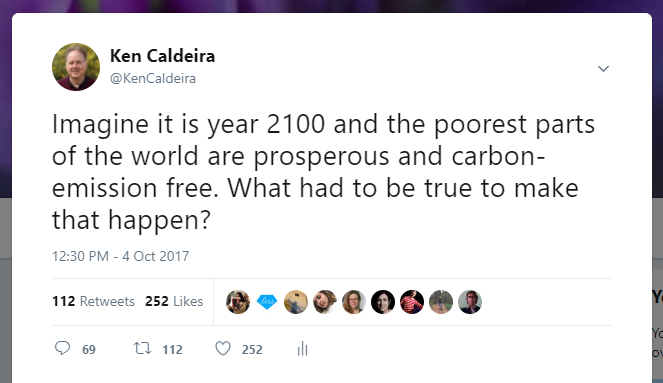To create something, we must visualize it first.
Every human artifact exists first in our minds and then only later in reality.
If we want a world where nearly everyone can experience a deep sense of well-being, and where nature can flourish, we need to visualize that world and attempt to create it.
Many people have been thinking about transition paths to better futures, and often these discussions get hung up in the difficulty of getting anything done in a political environment that is oriented to short-sighted self-service of the privileged few.
Much of the climate conversation seems to hover around doom and gloom, generating feelings of frustration and despair. This negative messaging is not getting us to where we want to be.
Another approach is to attempt to visualize a range of futures that we would like to live in (or like to see the world living in) and then try to understand which of these possible futures has a feasible path leading to it from where we are now.
What would have to become true in order to make each of those futures possible? How likely is it that each of those things would become true? If we construct many such lists for many such futures, we can ask what are the items that show up again-and-again on nearly every list, and therefore is a likely requirement for making good futures be feasible futures.
This idea of trying to visualize outcomes that we want and then figure out transition paths to those outcomes has become a major organizing theme for much of the work in my group. (See http://CarnegieEnergyInnovation.orghttp://CarnegieEnergyInnovation.org)
I recently tweeted “Imagine it is year 2100 and the poorest parts of the world are prosperous and carbon free. What had to be true to make that happen?” I was surprised by the amount of conversation that this tweet generated. It suggests people are ready for some positive messaging around the climate issue.
But positive messaging must be realistic. While it is important to visualize positive futures, we should not delude ourselves into thinking that those positive futures will be easy to create.

